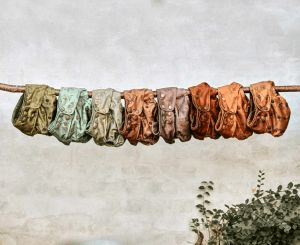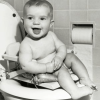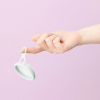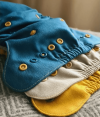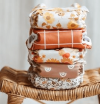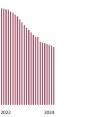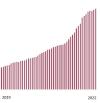“My diapers smell like a wet dog.”
“When I open the diaper pail, tears well up in my eyes.”
"My baby has a nasty red rash."
“My diapers are suddenly completely worn out.”
These are some of the comments that we hear regularly and often turn out to be a signal for diapers with a so-called “build-up”.
Opinions often change about washing diapers and advice still varies per seller, supplier and even per country. A few years ago, the standard advice was to use as little detergent as possible. Preferably only a quarter of the recommended amount. After all, you didn't want a build-up of soap residue in your diapers. Fortunately, that advice is now obsolete. Because what you want even less than a soap build-up is a build-up of old urine residue.
Old soap or urine residue?
Diapers with problems such as stench, rash, reduced absorption or accelerated wear suffer from either built-up soap residue or built-up dirt (usually urine residue). The first is rare, the second is more common. You can see quite easily if there may be a soap build-up. Take a few washable wipes or, if you're not using them, a diaper, and put them in a bowl of water. If that water becomes soapy, there is still soap in the wipes or in the diaper. You often use (much) too much soap, or your machine does not rinse enough water through the diapers. If you do not see any excess soap and if there are indications that something about your washing routine is not optimal and if you have smelly diapers that in the worst case also cause a rash, you can assume that the diapers have a build-up of old urine residue.
Old urine residues that build up inside the diaper are a source of trouble. Urine is highly corrosive and can literally eat away at the fabric of your diaper. As soon as the old urine remains come into contact with fresh urine, because your baby is urinating, a considerable ammonia odor is often released as a reaction. In addition, soiled diapers will absorb less moisture, which means you will experience leakage sooner. And to make matters worse, your baby can get an unsightly rash from diapers that are not properly clean. This bright red and often painful rash is known as “ammonia burn”.
Proper laundry routine
Diapers get heavily soiled. There is very little laundry that is dirtier than diaper laundry. Not only because there is pee and poop in them, but also because diapers often consist of several layers. A thorough cleaning, also of the inner layers, is very important. Although dirt build-up can be a major problem, it is easy to prevent or fix. A good laundry routine is the simple answer.
Always have in mind that diapers are heavily soiled, and was accordingly. The wash routine for reusable diapers always consists of two steps. A relatively short cold wash, also called cold rinse or prewash. And a longer 60 degrees wash. Both washes should be complete cycles. The prewash must be a complete wash, with detergent and with rinsing, spinning and draining.
Fill the drum as full as possible, but at least ¾ full. A washing machine does not fill up quickly. If your hand still fits flat on the laundry, you're good. If you are not able to make a full drum with only diapers, then add laundry that can be washed at 60 degrees after the prewash. If you turn on the washing machine too empty, the diapers can rub against each other less well, making them less clean.
- Start with a cold prewash. Due to the low temperature, stains have less chance of settling. Use an amount of detergent for lightly soiled laundry for this cold wash. A detergent package almost always has a dosage table or formula on the package. After this pre-wash, make sure that the washing machine spins well and drains the water. A prewash ideally takes between 15 and 30 minutes.
- Then run the main cycle at 60 degrees. At 40 degrees you do not wash the diapers hygienically clean and bacteria and fungi survive a 40 degree wash with ease. With the main cycle, dose detergent for heavily soiled laundry. The main cycle should ideally last 2 hours or a little longer. Don't use the Eco option (which often uses very little water), but don't use the extra rinse option either. With that you often only wash extra calcium into your diapers.
Detergent dosage
The exact dosage of the detergent is critical and often things go wrong here. There should always be an indication of the recommended dosage on the packaging of your detergent. On one packaging can be more extensive than on the other.
Below is an example for the Ariel Sensitive detergent.
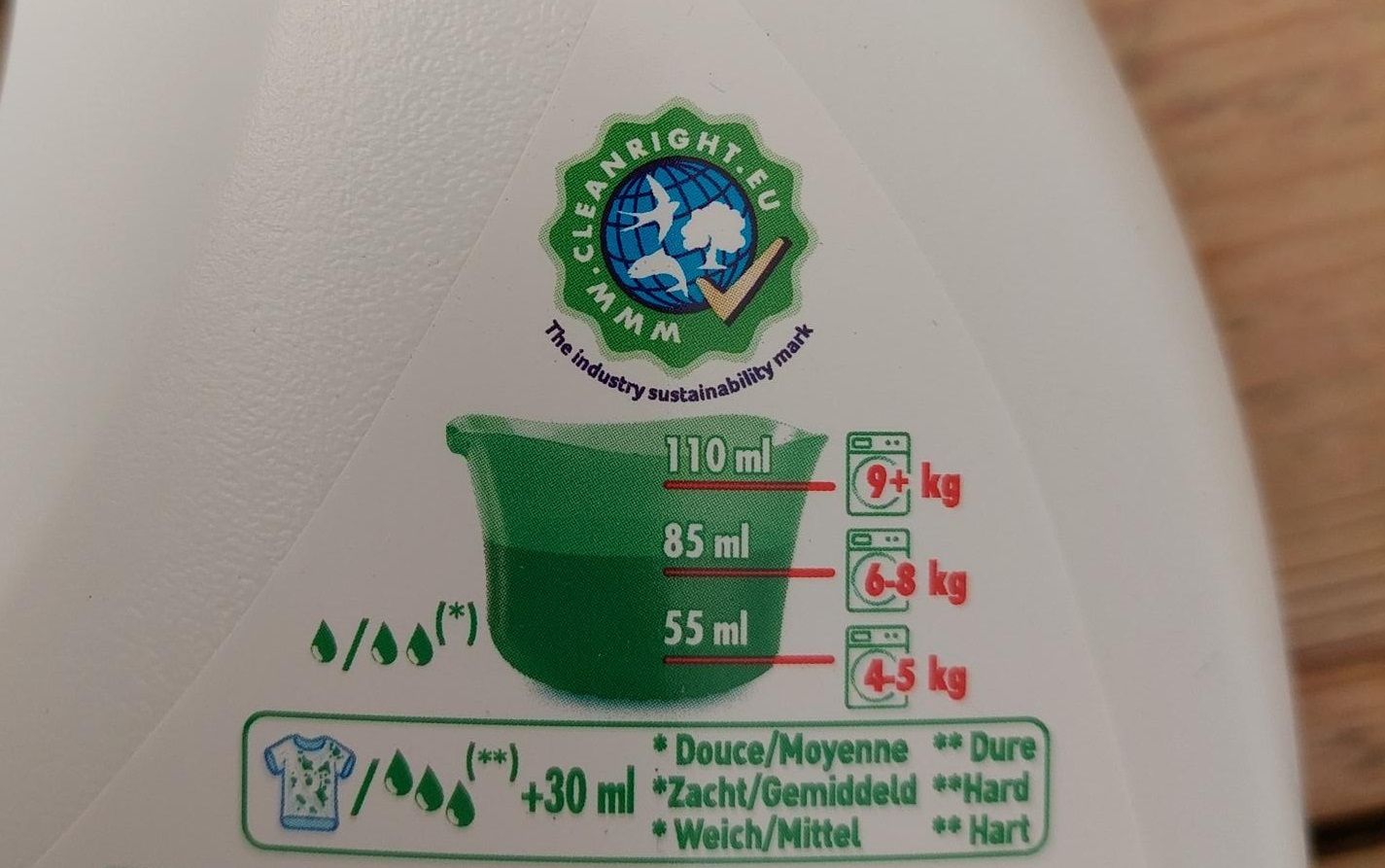 The drops in the image above indicate whether it concerns lightly soiled (1 drop), moderately soiled (2 drops) or heavily soiled (3 drops) laundry. In addition to the dirtiness of the laundry, the dosage of the detergent also depends on the water hardness (indicated here by the * for soft and medium water and ** for hard water). Also, the size of your washing machine (can be seen in the kg range in the picture above) is important. You can easily find the water hardness for your place of residence on Google. The water company can also provide you with this information. The size of your washing machine drum is often stated on the machine itself, or in the booklet.
The drops in the image above indicate whether it concerns lightly soiled (1 drop), moderately soiled (2 drops) or heavily soiled (3 drops) laundry. In addition to the dirtiness of the laundry, the dosage of the detergent also depends on the water hardness (indicated here by the * for soft and medium water and ** for hard water). Also, the size of your washing machine (can be seen in the kg range in the picture above) is important. You can easily find the water hardness for your place of residence on Google. The water company can also provide you with this information. The size of your washing machine drum is often stated on the machine itself, or in the booklet.
Suppose you have a large washing machine of 9 kg and you have average hard water (indicated by * in this diagram), then you should dose 110 ml for the pre-wash. With the main wash you have to dose for heavily soiled laundry and you have to add 110+30=140 ml there. So in total you dose 250 ml of detergent with one diaper wash. But if you have hard water, you have to dose 110 + 30 (for hard water, so **) = 140 ml for the prewash. With the main wash you have to dose 110 + 30 (for hard water) + 30 (for heavily soiled) = 170 ml.
Below is an example for the Klok Kleur detergent.
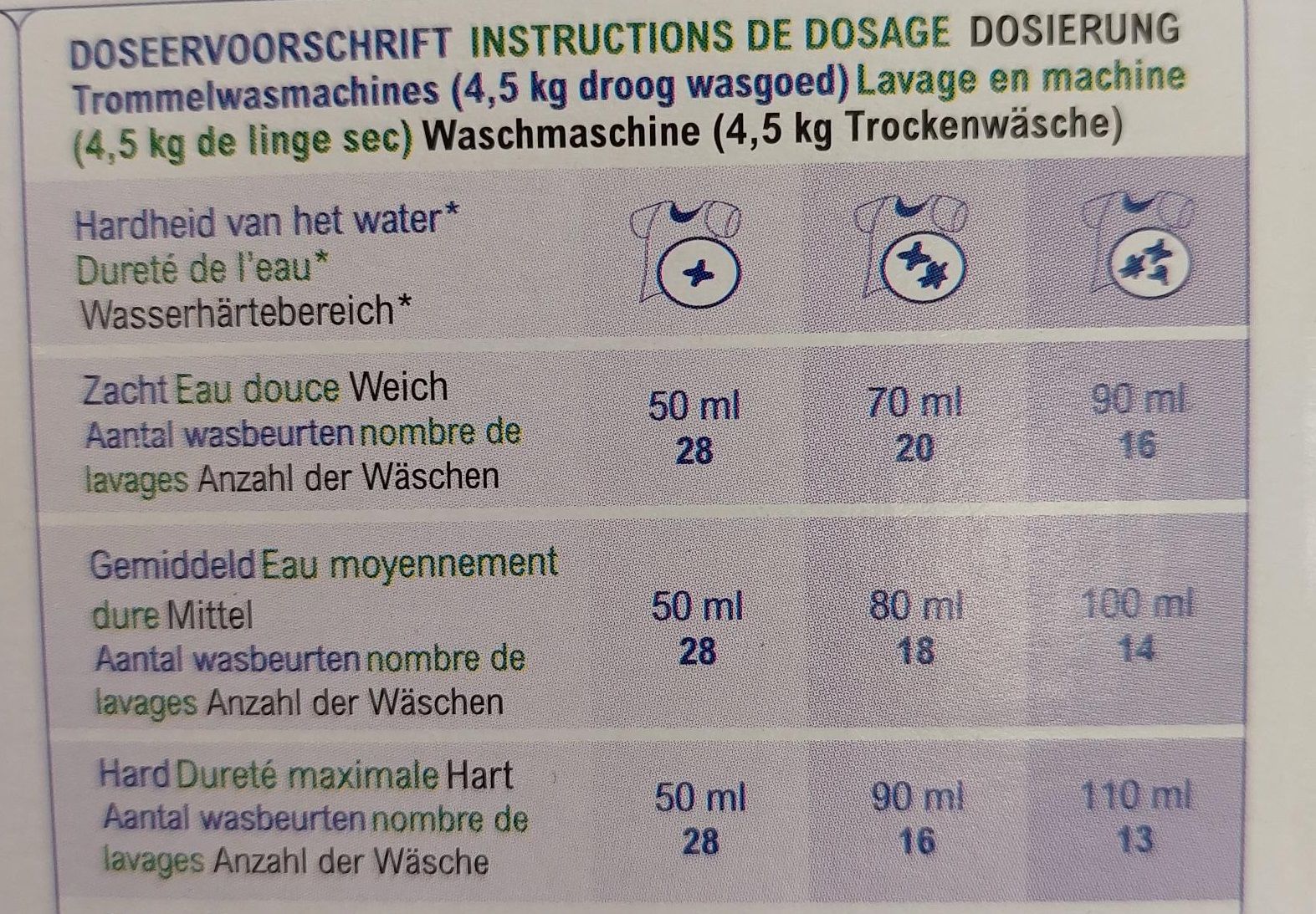
Suppose you have a 4.5 kg washing machine and your water is hard, then you dose 50 ml with this detergent in the prewash (because the shirt with one stain indicates the amount of detergent for lightly soiled laundry). With the main cycle you should dose 110 ml. In total you dose 160 ml. But if you have a 9 kg drum, you have to double both doses, which results in 320 ml for both washes together (100 ml prewash and 220 ml main cycle).
Which detergent is best?
Preferably choose a fairly strong detergent. A detergent must in any case contain surfactants, have a relatively low soap content (less than 5%) and contain enzymes. It is best to wash with a color detergent, because it contains no bleaching agents.
Enzymes?
Some manufacturers of cloth diapers recommend washing with a detergent that does not contain enzymes. Enzymes affect fabric, but also ensure that laundry is really clean. We recommend that you always wash with a detergent with enzymes, because it simply cleans better.
Eco-Friendly detergent?
Many reusable diaper users would prefer to opt for an Eco detergent. Makes sense! Unfortunately, our experience is that in almost all cases Eco detergents are quite weak and do not wash cloth diapers clean enough. Klok Kleur is one of the stronger Eco detergents, but not as powerful as a regular detergent. If you consciously choose an Eco detergent, pay extra attention to the dosage and it is better to dose a little too much than too little. We recommend a regular detergent, such as Ariel Sensitive.
Liquid or powder?
Liquid detergent dissolves more easily and leaves less stains on clothes. When washing at a low temperature and/or a short program, it often gives a better result and you can also wash oily stains more easily with liquid detergent. Washing powder does not always dissolve well at a low temperature or during a short program and sometimes residues remain visible in the container. Also, washing powder can stain the laundry if it is not dissolved or rinsed well enough. In addition, washing powder has a slightly abrasive effect, which is not necessarily good for the laundry. Microplastics come off more easily when synthetic laundry is washed with powder. At high temperatures, washing powder is often slightly more effective than liquid detergent. A combination of both detergents is recommended for your washing machine. It is also recommended to regularly run a hot wash at 60 degrees or higher. This keeps the pipes and the drum clean.
For washing cloth diapers, liquid or powder detergents can both work well. Please do make sure that your liquid detergent does not contain fabric softener. Sometimes this is added to a liquid detergent. Fabric softener coats the fibers and reduces the absorbency of your diapers by about 30%. Fabric softener is therefore best avoided.
What not to use?
Avoid fabric softener, vinegar, borax and bleach/stain removers. These agents reduce the effectiveness of your diapers, can damage your diapers and/or are not suitable for use on the delicate baby skin.
Stripping diapers
Stripping diapers is a method to get heavily soiled cloth diapers clean again. With a good washing routine, stripping is not necessary. Stripping is a heavy burden on your diapers and should only be done if there is absolutely no other option.
If you suspect that your diapers are not properly clean, you can first try to wash them correctly three times in a row, with proper detergent and dosage as discussed above. This is sufficient in almost all cases.
If that doesn't work, you can consider stripping. This will void the warranty on your diapers and your diapers may deteriorate. Elastic bands in particular do not always survive stripping.
How do you strip diapers?
1. You wash the diapers in the manner described earlier with detergent.
2. You soak the diapers in a bath with the following ingredients:
- Half a cup of washing soda (sodium carbonate). This degreases and cleans. You can find it in the supermarket in the laundry and cleaning department.
- Half a cup of descaling agent for laundry, e.g. Calgon
- A splash/cup of detergent
Mix these ingredients together in warm water and let the diapers soak in it for 4 to 12 hours. The water can discolor and start to smell. This is due to the accumulated dirt that is released. Stirring occasionally helps to get even more dirt out.
3. Rinse the diapers thoroughly by washing them on a regular wash cycle without detergent.
4. Wash the diapers at 90 degrees with your own detergent.
5. Wash the diapers at 60 degrees with your own detergent.
There are also other stripping methods circulating on the internet, which are less or ineffective. Examples of this are washing without detergent or washing with a dishwasher block. If you wash diapers without detergent, you only rinse water through them. In the Netherlands, the water actually always contains lime. And whether that is a lot (hard water) or a little (soft water), you mainly rinse lime in your diapers. If your diapers have an enormous soap build-up, due to the structural use of far too much detergent, you will of course also rinse out some soap. But diapers that need to be stripped almost always suffer from a build-up of dirt from urine residue. A build-up of soap scum hardly occurs. A dishwasher block degreases and cleans, but does that no better than a well-dosed detergent that has been specially developed for washing textiles. Unfortunately, you cannot get your diapers rid of all the accumulated dirt with a single dishwasher block.
Maintenance of your washing machine
A clean washing machine lasts longer and washes better. So take good care of your machine! Wash at 60 degrees regularly and preferably alternate liquid detergent and washing powder. It is advisable to run a 90 degree wash with an empty drum once a month. Put a dash of vinegar, soda or special detergent for the washing machine in the drum. Make sure you first thoroughly wipe the edges of the drum and the rubbers with a cloth to remove any soap residue or dirt. Then turn on the machine and you're done!
Conclusion? Everything can be solved!
If you ever have tears in your eyes when you open the diaper pail or if you smell a very strong smell when your baby has just gotten the diaper on, please know that it can be solved. If you need additional help apart from this text, you can always contact us.
Written by Ilka, owner Nappy's.nl
